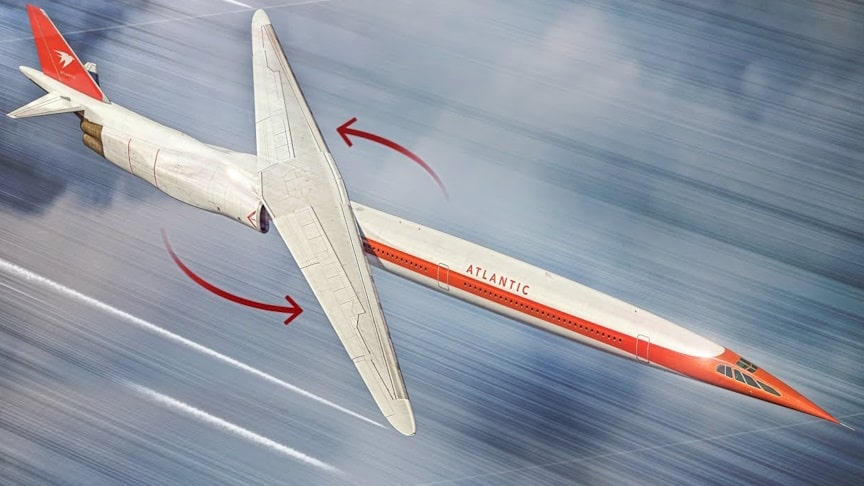An oblique wing (also called a slewed wing) is a variable geometry wing concept. On an aircraft so equipped, the wing is designed to rotate on center pivot, so that one tip is swept forward while the opposite tip is swept aft. By changing its sweep angle in this way, drag can be reduced at high speed (with the wing swept) without sacrificing low speed performance with the wing perpendicular.
source.image: Mustard
In the 1950’s Robert Thomas Jones, a brilliant NASA engineer, began developing a radical new wing arrangement called an oblique wing (also referred to as a skewed wing). The wing design was characterized by a wing that could pivot into a unique angled configuration in relation to the aircraft’s fuselage. Watch the video from Mustard for more info:
The design offered several advantages over more conventional swept wings. An oblique wing’s ability to pivot into a straight wing made it ideal for low speed flight (improving efficiency and take-off/landing performance), but at transonic and supersonic speeds, the angled orientation minimized both wave and induced drag, leading to improved overall aerodynamic efficiency.
Advertisement
With lower drag at higher speeds, oblique wing aircraft would require less thrust to maintain a given speed, resulting in reduced fuel consumption and operating costs. Compared to other variable geometry wings, oblique wings would also be lighter, less complex and have fewer drawbacks like a shifting center of lift.Alternatively, at Mach numbers increasing towards the speed of sound and beyond, wave drag dominates design concerns. As the aircraft displaces the air, a sonic wave is generated. Sweeping the wings away from the nose of the aircraft can keep the wings aft of the sonic wave, greatly reducing drag.











